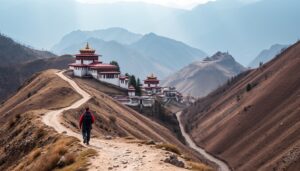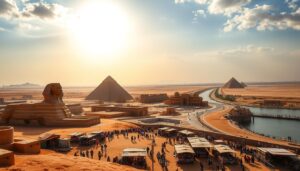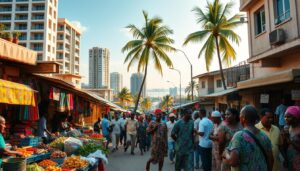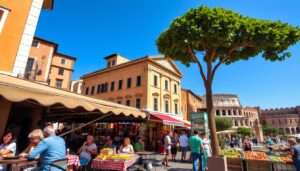Lebanon is a compact country with a long, layered past that fits into a small map of the Middle East. Ancient cities like Byblos hold ruins from 5,000 BC, while Baalbek shows off massive Roman temples that still amaze visitors.
The nation’s name comes from the Semitic root “lbn,” meaning “white,” a clear nod to Mount Lebanon’s snow caps. That contrast—snow and sea—lets you ski in the morning and swim in the Mediterranean by afternoon.
Beirut, once called the “Paris of the East,” has rebuilt its energy after years of conflict and the 2020 port blast. Five UNESCO sites—Byblos, Baalbek, Tyre, Anjar and the Qadisha Valley—show why this small spot matters to the world.
Key Takeaways
- Ancient cities offer living links to early civilization.
- Mountains and coast create dramatic, varied landscapes.
- Beirut blends deep culture with modern resilience.
- UNESCO sites rank among the region’s top attractions.
- The Bekaa Valley keeps a long wine-making history.
Lebanon at a Glance: Small Middle East country, big history, and even bigger heart
A compact republic on the eastern Mediterranean, it combines high peaks and coastal cities in striking contrast.
Official name: Lebanese Republic. Area: about 10,400 sq km; population: roughly 5.3 million. The capital city is Beirut, a cultural hub where Arabic, French, English and Armenian mix in daily life.
The country’s borders touch Syria and Israel, while the Lebanon Mountains run parallel to the coast. That spine gives you alpine towns an hour from seaside promenades and shapes how cities and villages feel across the region.
Its name comes from the Semitic “lbn,” meaning “white,” a nod to snow on Mount Lebanon. Mentioned in ancient texts across the world, the republic’s long history spans Ottoman rule, a French mandate, and independence in the 1940s — layers evident in culture, faiths and food after many years.
“Small on the map, large in heritage: this country joins mountain, sea and deep history in one place.”
- Practical note: time zone is UTC+2 (UTC+3 in summer).
3 Essential facts About Lebanon You Need To Know
Timelines overlap here: Bronze Age ports, Roman temples, and living villages. Walk streets where layers of history are visible in stone and in daily life.
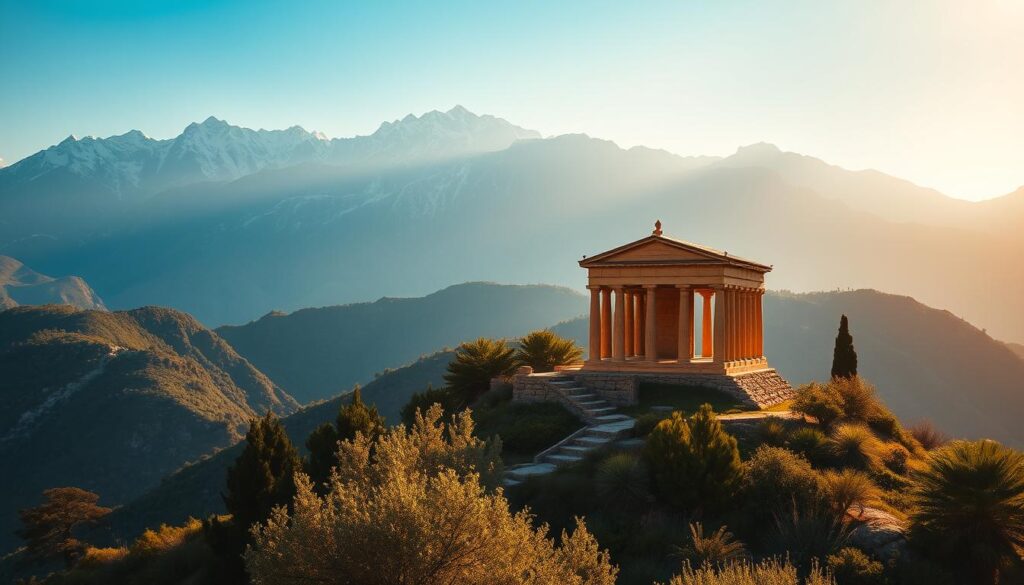
Ancient heritage you can walk through
Five unesco world heritage sites let you step into the past. Anjar shows Umayyad planning, Baalbek offers massive Roman temples, and Byblos preserves millennia of occupation.
Baalbek, Byblos, and Tyre in brief
Baalbek’s Roman grandeur centers on the Temple of Jupiter and monumental ruins that impress visitors. Byblos traces roughly thousands years of settlement, while Tyre links to the famed purple dye and coastal mosaics.
Geography and the Bekaa Valley
Elevations create four distinct seasons in this small country. You can ski in the morning and swim by the afternoon at a nearby beach.
- Use mountains, coast and the bekaa valley for varied outdoor plans.
- Taste local wine in the Bekaa, where viticulture spans thousands of years.
- Enjoy fresh cuisine—tabbouleh, kibbeh and grilled mezze paired with Bekaa reds.
“A compact land of layered ruins, world heritage sites, and warm hospitality.”
Context that shapes your experience: Beirut’s energy, resilience, and what it means for you today
Beirut’s streets carry a mix of chic cafés, art spaces, and reminders of hard-won recovery.
The city earned the nickname “Paris of the East” in the 1960s and kept a lively cultural reputation despite decades of conflict.
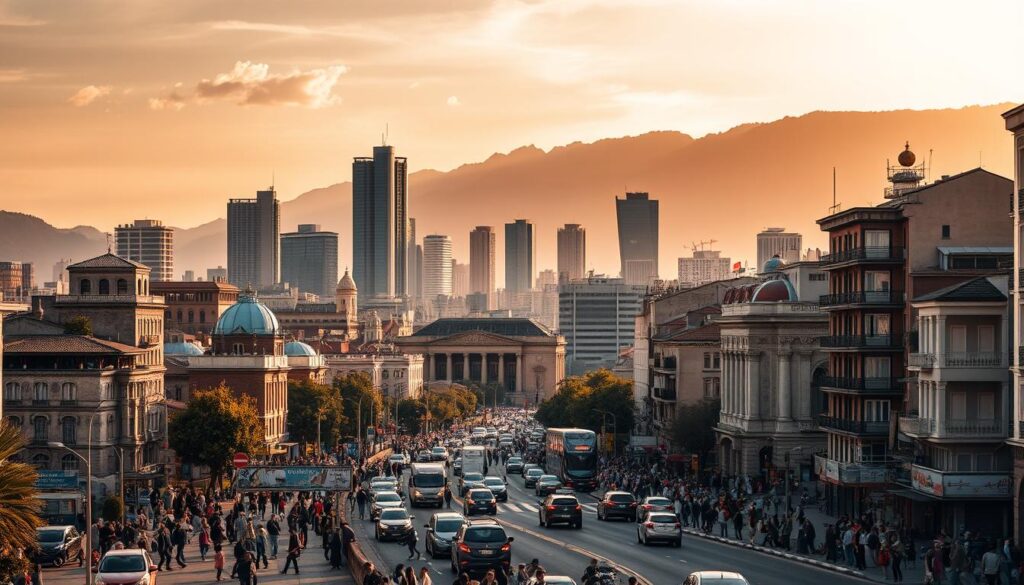
Paris of the East to urban phoenix
Historical shocks changed the capital city. The civil war (1975–1990) caused heavy loss and mass displacement.
Troop withdrawals in 2000 and 2005, independence in the 1940s, and the 2020 port blast — which killed at least 200 and injured thousands — all shape the modern city.
“Beirut rises again through neighborhoods, galleries, and everyday life.”
What travelers actually find now
Many popular districts welcome visitors with galleries, nightlife, and coastal walks.
- Costs: hostels $10–$20; hotels $150+; meals from $5 to $50.
- Transport: buses under $1, taxis $5–$15, car rentals ~$30/day; ride apps are common.
- Smart habits: monitor advisories, use official taxis, avoid political talk in public.
Balance headlines with on-the-ground reality and plan your day the way locals do for a smoother visit.
Conclusion
This small country packs millennia of culture into compact landscapes. ,
World-class ruins, five UNESCO sites, and thousands of years of wine and craft make each visit rich and varied.
Beirut stays a resilient cultural hub, while Byblos, Baalbek and Tyre trace layered history across cities and coast.
Plan by season: hike in the morning, visit a vineyard in the day, then relax at a nearby beach by late afternoon.
Costs fit many budgets, and short trips or longer stays both reward curious travelers who want real hospitality and deep local flavor.
facts lebanon here point to a compact nation in the region that feels much larger in memory and experience.
FAQ
Where does the name “Lebanon” come from and why does it matter?
The name comes from the Semitic root “lbn,” meaning white, a nod to the snow-capped peaks of the Mount Lebanon range. That geography shaped trade, culture, and the cedar-based economy for millennia, so when you visit, you’re walking through landscape that shaped the country’s identity and historical role in the wider Middle East.
What UNESCO World Heritage sites can you visit?
You can explore several UNESCO-listed sites: the Roman temple complex at Baalbek, the ancient port city of Byblos with its continuous occupation for over 7,000 years, and the archaeological remains of Tyre. Each site shows different layers of history—from Phoenician seafaring and Roman architecture to medieval coastal trade—so you get a vivid sense of continuity and change.
Can you ski and swim in the same day?
Yes. Lebanon’s compact geography and microclimates let you hit ski slopes in the Mount Lebanon range in the morning and relax on a Mediterranean beach by afternoon during winter and spring transitions. That diversity makes it ideal for varied day trips and outdoor plans.
Is the Bekaa Valley worth visiting for wine and food?
Definitely. The Bekaa Valley is Lebanon’s agricultural heart and historic wine region. Wineries like Chateau Ksara and Chateau Kefraya produce internationally recognized wines, and the valley’s farms supply fresh produce used across Lebanese cuisine—so you can pair tastings with authentic farm-to-table meals.
How has Beirut’s history affected what you’ll experience today?
Beirut earned nicknames like “Paris of the East” for its cultural life but also endured civil war and the 2020 port blast. Those events shaped rebuilding, resilient local scenes, and a complex urban fabric. Today you’ll find vibrant neighborhoods, lively nightlife, museums, and memorials that reflect both recovery and ongoing challenges.
Which areas of Beirut are safest and most visitor-friendly?
Popular, well-trafficked areas such as Gemmayzeh, Mar Mikhael, Downtown (Beirut Central District), and Ain Mreissé attract tourists for dining, galleries, and nightlife. They generally feel safe during daytime and evening hours, but you should follow local advice, avoid protests, and use common-sense precautions like you would in any major city.
What should you budget for food, transport, and lodging?
Costs vary widely. You can eat affordably at street vendors and casual cafes, or splurge at fine-dining restaurants in Beirut. Public buses and shared taxis keep transport inexpensive; private taxis and car rentals cost more. Plan a flexible budget: Lebanon offers options from backpacker-friendly to luxury stays.
What languages will you hear and need?
Arabic is the official language; Lebanese Arabic is the common spoken dialect. French is widely used, especially in business and education, and English is common in tourism, media, and younger generations. You’ll usually get by with English in hotels, restaurants, and tourist sites.
How do cultural norms affect travel plans?
Lebanese hospitality is warm and personal. Dress is generally modern and liberal in urban and coastal areas but more conservative in rural or religious settings—so pack a mix of clothing. Respect for family, religion, and local customs will help you connect positively with hosts and vendors.
When is the best time to visit for weather and events?
Spring and autumn provide mild weather, ideal for sightseeing, hiking, and wine tours. Winter serves skiers and cozy mountain stays, while summer brings beach season and festivals. Check local event calendars for concerts and cultural festivals in Beirut and Byblos to match your trip with live experiences.


